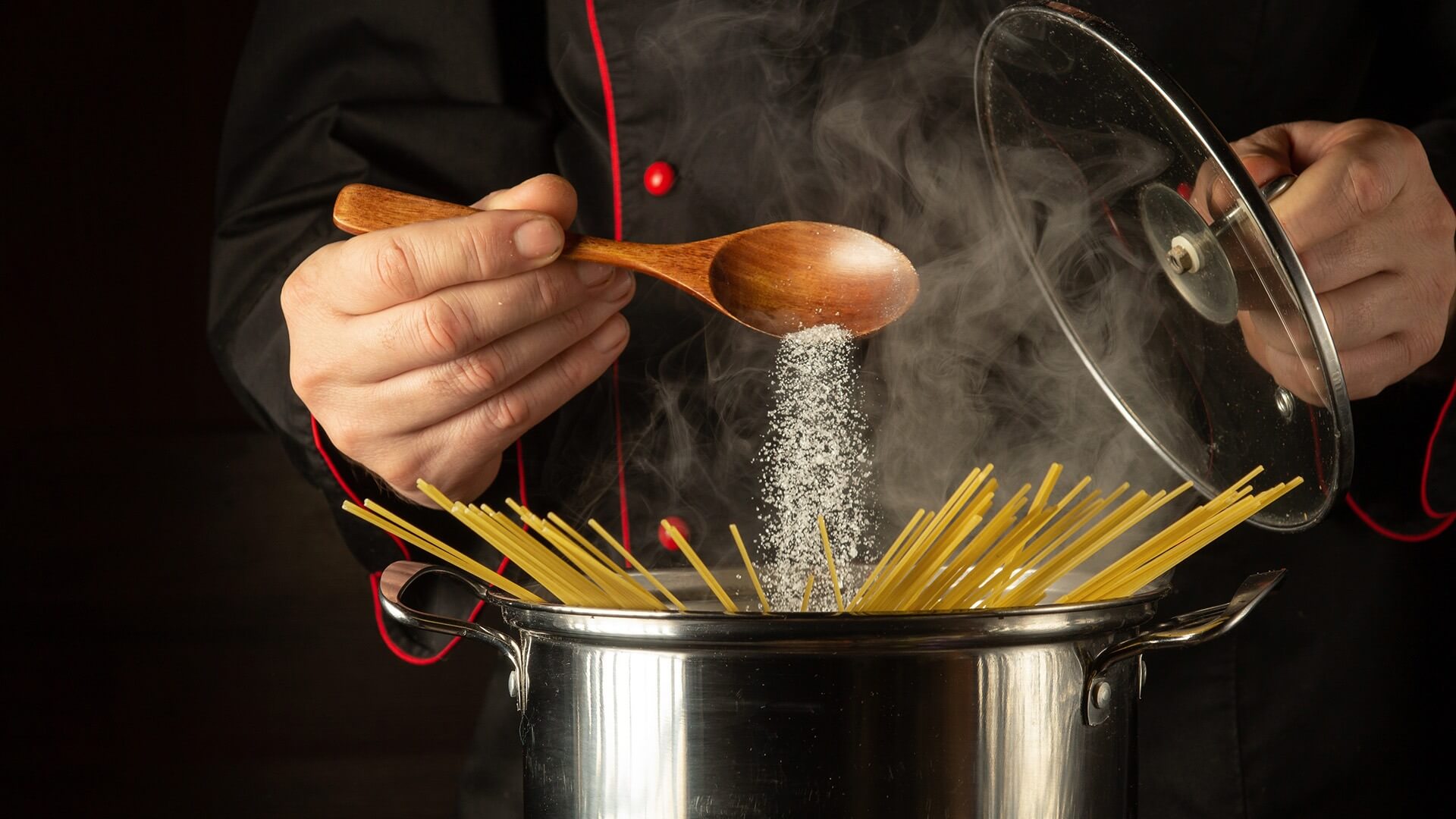

Something to Noodle Over – Saying Pasta la Vista to your Salty Side!
It’s spaghetti night, and everyone is looking forward to that delicious family favorite. Of course, you are going to salt the water just like mom taught you. But, wait! Should you be using iodized salt in your pasta water? Will it make a difference? As it turns out, there may be some important considerations to take into account when salting pasta water. First, let’s look at the science, and then we will address the issue of flavor.
Spoiler alert … cooking expert, Christopher Kimball of Milk Street, offers some tips for making spaghetti night extra tasty.
First, the Science
Iodide consumption is important for human health. Similarly, treating tap water with chlorine or chloramine makes it safe to drink. However, the combination of iodized salt, pasta, and sanitized tap water is not exactly a match made in heaven.
Here’s the problem. Some of the disinfectants used for drinking water treatment break down, leaving disinfectant byproducts (DBPs) behind. Unfortunately, studies have shown that these chemicals are associated with an increased risk of bladder cancer, though we aren’t certain which ones drive such risks.2 When your tap water is heated with pasta and iodized salt, DBPs in tap water can react with the iodide and pasta to form iodinated disinfectant byproducts (I-DBPs), which are known to be more toxic.1
Given the variety of compounds in the food we eat, it is quite difficult to measure just how much of an effect this reaction has on our pasta. Luckily for us, a recent study published in Environmental Science & Technology was the first to test “real world” conditions, focusing on seven I-DBPs.
Researchers first cooked the pasta following the package directions, then tested variables such as the amount of salt added, the length of cooking time, when the salt was added to the water, and the salt type. They also separated the water and pasta to determine the distribution of I-DBPs.1
Regardless of cooking conditions, I-DBPs were present in nearly all the finished products. However, none of the target I-DBPs were found when kosher or Himalayan salt were used.1 This may seem obvious, but there were some other interesting things of note.
For example, when cooking time was prolonged, lower concentrations of I-DBPs were found due to vaporization of the compounds over time.1 This makes sense, but most people don’t want to cook their pasta into mush. So, how can we avoid consuming I-DBPs? The researchers offer a few options:
- Try cooking the pasta without a lid – the water may take longer to boil, but removing the lid allows I-DBPs to escape.1
- Make sure to strain the pasta after cooking – surprisingly, only 30% of the I-THMs (iodinated trihalomethanes, a sub-category of I-DBPs) “stuck” to the noodles; the rest were washed away with the pasta water.1
- Opt to add iodized salt to the pasta AFTER cooking, or after boiling your water for at least 10 minutes.1
- The former will minimize any I-DBP formation by removing the opportunity for tap water and iodized salt to mix.
- The latter will ensure that residual disinfectants in the tap water are vaporized so that there is nothing left for the iodine to react with.
- As a no-risk option, use iodine-free salt instead. As previously stated, none of the target I-DBPs were detected in the pasta samples cooked with kosher or Himalayan salt.1

Now, the Flavor
Regarding salt choice, Christopher Kimball told The Standard, “Keep it simple and natural, and use kosher salt. Also, kosher salt is easy to pick up with the fingers for sprinkling, and table salt is not.” Kimball, who is also the author of Milk Street Noodles, suggests using 1 Tbsp of salt per 2 quarts water. He uses less water than most folks – 2 quarts instead of 4 – in order to make the water super starchy. “We use the cooking water in the sauce for many recipes, and the starch helps the pasta and sauce bind together.” Said Kimball.
Kimball also provided several additional tips for making that spaghetti night meal extra delicious. “Brown the tomato paste along with the oil and onions for more depth of flavor.” As another option, Kimball went on to say, “I use our own Garlic Confit and Sofrito (they come in jars) for a super quick and easy sauce – I just throw some in with a good glug of oil and let it sizzle for a couple of minutes before adding the canned tomatoes. And, best of all, add say a 1/4 tsp of baking soda to a tomato sauce to neutralize acidity and to make it sweeter. Finish tomato sauces with a final glug of EVOO [extra virgin olive oil] for a silky texture and a great fresh flavor.”
Your next spaghetti night meal is going to be awesome!

